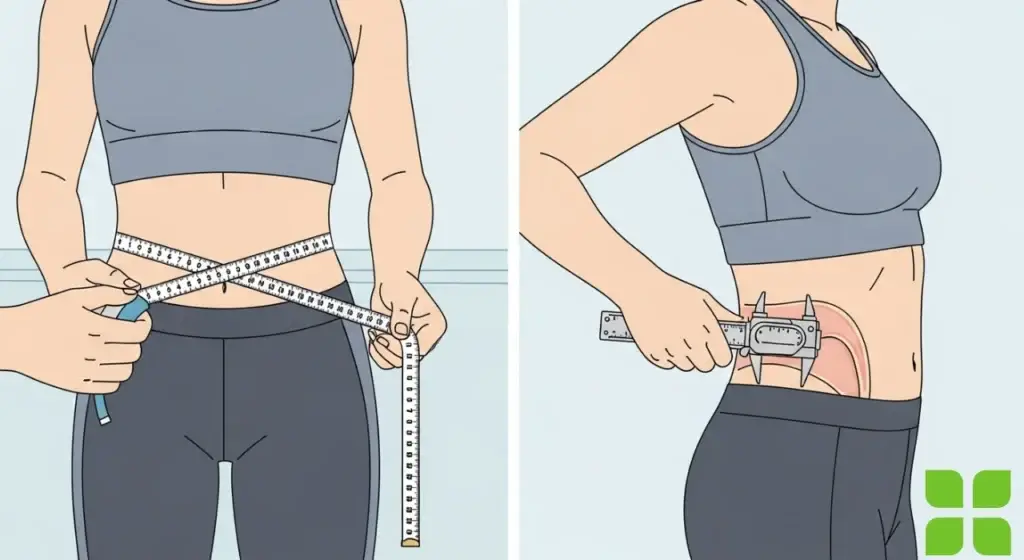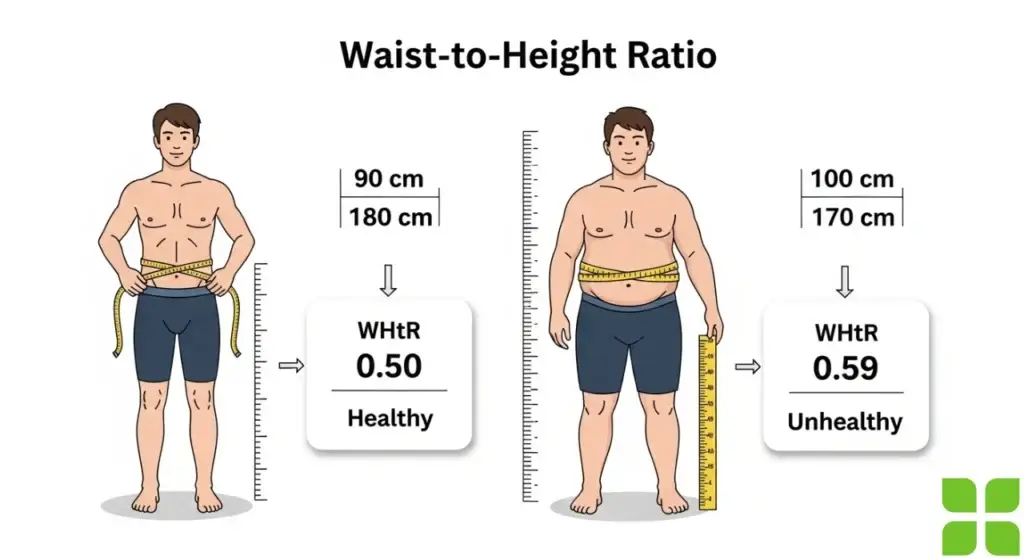How to Measure Belly Fat and Understand Your Health Risk

We’ve all been there. (Measure Belly Fat) You step on the bathroom scale, hoping for good news, and the number staring back at you doesn’t tell the whole story. It might go down when you feel bloated or go up after a workout. The truth is, your’s full body weight is just one piece of a much larger health puzzle. When it comes to long-term health, where you store fat on your body is far more important than what the scale says.
Specifically, we’re talking about belly fat. And no, not just the soft, pinchable layer on the surface. The real concern it belly fat you can’t see: visceral fat.
This is the firm, internal fat that wraps around your vital organs like the liver, pancreas, and intestines. Unlike the subcutaneous fat just under your skin, visceral fat is metabolically active. It acts like an organ itself, pumping out inflammatory substances and hormones that can seriously disrupt your body’s normal functions. This is why excess belly fat is so strongly linked to an increased risk of heart disease, type 2 diabetes, high blood pressure, and even certain cancers.(Measure Belly Fat)
So, how do you know if you’re at risk? Forget the scale and the misleading BMI charts for a moment. Here are three simple, science-backed ways to measure your abdominal fat at home and understand what the numbers actually mean.(Measure Belly Fat)
Jump to..
1. The Gold Standard at Home: Waist Circumference

If you do only one measurement, make it this one. Your waist circumference is the single more practical and reliable indicator of risky visceral fat. It’s easy, quick, and gives you a clear number to track over time.(Measure Belly Fat)
How to Do It Right:
Find Your Landmark:
Stand up straight and locate the top of your hip bone and the bottom of your rib cage. Your waist is the midpoint between these two spots—usually right around your navel.
Get Your Tool:
Use a flexible, non-stretchable measuring tape (like one from a sewing kit).
Measure Correctly:
Wrap the tape around your bare abdomen at the designated midpoint. Make sure the tape is level all the way around; it shouldn’t be dipping down in the back.(Measure Belly Fat)
Relax and Exhale:
Don’t suck in your stomach! Stand relaxed, breathe out normally, and let the tape be snug against your skin’s without digging in. Read the measurement.
What the Numbers Mean:
These guidelines, used by organizations like the National Institutes of Health (NIH), are a general indicator of increased health risk.(Measure Belly Fat)
For Women:
A waist circumference of 35 inches (88 cm) or more is associated with a high risk.
For Men:
A waist circumference of 40 inches (102 cm) or more is associated with a high risk.
Think of this number not as a source of shame, but as a vital piece of health data, just like your blood pressure.
Related:The ‘Unhappy Hour’ Sabotage: How Alcohol is Secretly Stalling Your Fat Loss
2. Adding More Context: Waist-to-Hip Ratio (WHR)

Your body shape also tells a story. The Waist-to-Hip Ratio helps determine if you tend to store fat around your middle (an “apple” shape) or around your hips and thighs (a “pear” shape). The apple shape is more strongly associated with health risks because it indicates more visceral fat.(Measure Belly Fat)
How to Calculate It:
Measure Your Waist:
Use the measurement you took above.
Measure Your Hips:
Keeping the tape measure level, measure around the widest part of your hips and buttocks.
Do the Math:
Divide your waist measurement by your hip measurement.
Waist ÷ Hip = WHR (Example: 36-inch waist ÷ 40-inch hips = 0.9 WHR)
What the Numbers Mean:
According to the World Health Organization (WHO), health risks increase significantly at the following thresholds:
- For Women: A WHR of 0.85 or higher.
- For Men: A WHR of 0.90 or higher.
This ratio provides a more complete picture of your body’s fat distribution.
3. The Simple Guideline: Waist-to-Height Ratio (WtHR)

This is a newer, incredibly simple metric that’s gaining popularity for its straightforward message: “Keep your waist to less than half your height.” The beauty of this method is that it applies to people of all heights and body frames, making it a universal benchmark.(Measure Belly Fat)
How to Calculate It:
- Use your waist measurement from the first method.
- Make sure your waist and height are in the same units (both in inches or both in centimeters).
- Divide your waist measurement by your height.
Waist ÷ Height = WtHR
What the Numbers Mean:
- A ratio of 0.5 or higher is considered a marker of increased health risk.
For Eg, a person who is 5’8″ (68 inches) tall would aim to keep their waist circumference below 34 inches (68 ÷ 2 = 34). It’s an easy-to-remember goal that directly ties your abdominal fat to your overall body frame.(Measure Belly Fat)
From Measurement to Motivation
Knowing these numbers isn’t about fueling anxiety; it’s about gaining clarity. This data is your starting point—a powerful tool that empowers you to take control of your health in a way the scale never could.
If your numbers are in the high-risk zone, don’t panic. See it as a sign to begin a conversation with your doctor and to focus on the proven strategies that reduce visceral fat: a balanced diet rich in fiber and protein, regular movement that includes both cardio and strength training, prioritizing sleep, and managing stress. (Measure Belly Fat)
By moving beyond the scale and using these simple measurements, you can truly understand your risk and turn that knowledge into lasting, positive change.






